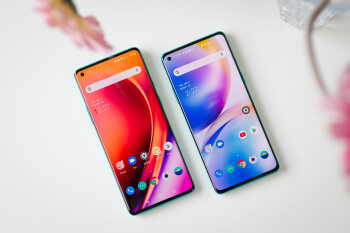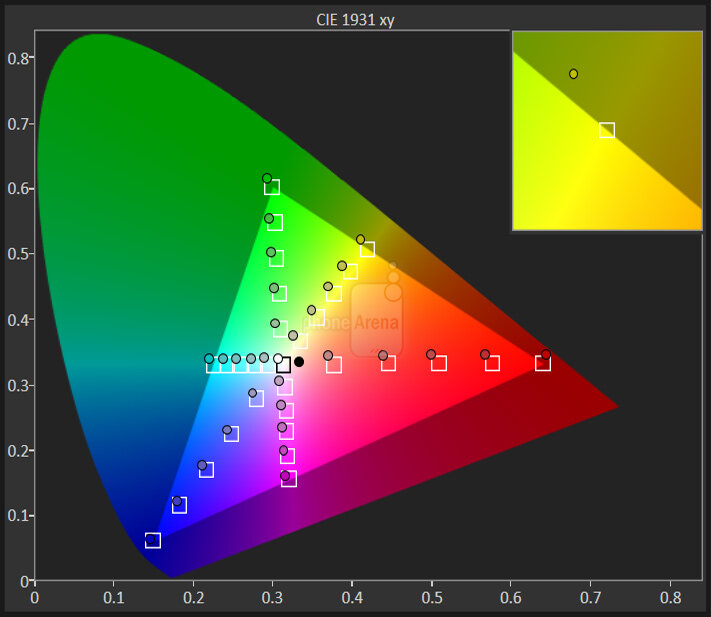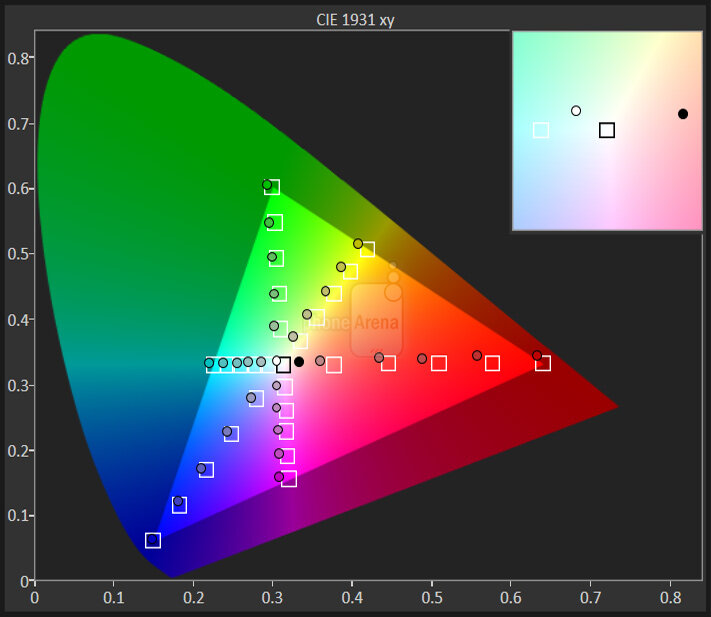What constitutes a great phone display? Is it the high resolution and pixel density? Nah, then the Sony Xperia 1 II with its 1644p 4K panel would top the list. Is it the high brightness and contrast that offer good outdoor visibility in daylight? That’s certainly important, but most of today’s flagships have HDR-certified panels that breach the 1000-nit barrier upwards to fit the standard, and their OLED tech delivers practically infinite contrast ratio, so it’s hard to pick on that merit alone.
Ditto for credible color gamut presentation, as per-unit display calibration is no longer a prerogative of Apple’s iPhones, while said HDR display flagships now cover both the standard RGB, and the wide P3 color gamuts. Is it the actual white balance and DeltaE numbers? It’s getting warmer, but throw in dynamically-adjusted refresh rate based on the content displayed, and you’ve narrowed it down to only a few choices when it comes to the best phone displays that we round up below.
Best 2020 phone displays overall
- OnePlus 8 Pro and Oppo Find X2 Pro
- 6.7″ 1440p LTPO HDR panels
- Dynamic 120Hz refresh rate at the full 1440p resolution
- Extremely low 0.3 JNCD (Just Noticeable Color Difference)
- MEMC video frame rate upscaling
Birds of a feather, these two, as they sport the same 6.7″ 1440p LTPO OLED panel with dynamic refresh rate and individual display calibration at the factory level courtesy of the imaging specialists from Pixelworks. Besides the near-perfect color accuracy, wide gamut coverage, and high average brightness, though, the OnePlus 8 Pro and Oppo Find X2 Pro have more arrows in their display quiver than any other phone released in 2020.
Display measurements and quality
- Screen measurements
- Color charts
- Color gamut
- Color accuracy
- Grayscale accuracy
View all
As if to offset all mishaps that happened in 2020, the world of phone making didn’t cease to amaze and notched the biggest development in mobile displays since, well, the introduction of the OLED technology. What happened? Popularizing the high dynamic refresh rate, that’s what, and there is no looking back once you’ve tried it while browsing and scrolling.
Moreover, the 6.78″ 1440p “Ultra Vision” screen of Oppo, dubbed “Fluid Display” technology on the OnePlus 8 Pro, both mimic the same great features that no other 2020 phone has in this combination. Variable refresh rate based on the content you are currently viewing? Check. 120Hz at the full 1440p screen resolution? Check. Upscaling content frame rate to match the one of the display? Yep, Oppo calls it Ultra Vision Engine, and it is able to upscale video to 60fps as well.
Moreover, this refresh rate changes automatically depending on what you have running to save on battery (like the Note 20 Ultra, but unlike the S20 Ultra), and here are the answers on our questions how does it all work exactly:
PhoneArena: Which apps get what Hz in Auto Select – is it 120Hz in Chrome, but 60Hz in, say, video playback? What about the interface?
OnePlus: It’s up to the app that you are using. For example, social media apps, browsers, system interface and other local apps like photo/video album support 120Hz, whereas most of the video and gaming apps support 60Hz. For the video playback, the refresh rate will depend on the video frame rate to be either 60Hz or 120Hz.
The display is basically able to do what MEMC TVs do, automatically increasing frames in video to up the rate, and take better advantage of the high refresh rate even with content that is usually shot with 24fps or 30fps.
Our display benchmarks of the 6.78″ 1440p screens above, and DisplayMate’s OnePlus 8 Pro screen review demonstrate that the OnePlus CEO wasn’t teasing when he said that these may be the “best smartphone display in 2020.” Detailing the panel’s virtues in a blog post, he also mentioned that:
In order to reach industry-leading color accuracy standards, we have added an additional automatic color calibration machine to the production line. By adding an extra 30 seconds to the production time, each display panel is automatically calibrated for color accuracy before it’s released.
The panel will not rest on its laurels, though, as Oppo already hinted that the Find X3 series will be first Androids to introduce end-to-end HDR10 color management, from the camera capture through encoding, storage, decoding and display playback, so something tells us that Oppo and OnePlus may keep the best mobile display crown next year as well.
The best displays of 2020 are getting perfect white balance in both the standard and wide color gamuts in 2021
Best Samsung phone display
- Galaxy Note 20 Ultra review
- Dynamic 120Hz refresh rate at 1080p resolution
- 6.9″ 1440p LTPO panel
- HDR10 certification
In the Galaxy S20 Ultra, the 120Hz display refresh mode is fixed in an either/or scenario with the 60Hz refresh, while on the Note 20 Ultra it adapts depending on the content, saving battery in the process. Samsung tips that it can go as low as 10Hz for static images which is pretty unprecedented, and is an invitation for battery life improvements.
Moreover, for the Note 20 Ultra Samsung has taken the best of both display worlds, and developed a brand new OLED screen technology called HOP that is also said to trickle down to the iPhone 13 next year. HOP is an abbreviation of Hybrid Oxide and Polycrystalline silicon, indicating that it will combine the up to 20% decrease in power consumption that low-temperature polycrystalline oxide (LTPO) displays like the ones on the Apple Watch or OnePlus 8 Pro employ, with the higher resolutions and lower costs of polycrystalline silicon (LTPS)-only panels like those on the Galaxy S20 Ultra.
Unfortunately, while the new Note 20 display tech introduces a lower power consumption and a dynamic refresh, a true 120Hz rate at the full 1440p resolution as seen in phones like the OnePlus 8 Pro, is still not present, as Samsung has some catching up to do when it comes to phones with the Iris chip from Pixelworks.
Best Apple phone display
- iPhone 12 Pro Max review
- 6.7″ LTPS panel with static 60Hz refresh rate
- Top peak brightness
- Toughest Ceramic Shield cover glass protection
Granted, Apple’s finest lacks the most important 2020 metric of a great phone display but if you are already invested in the iOS ecosystem, there is nothing better than the largest, toughest display on an iPhone so far.
As if to soothe your high refresh pains, Apple offers its usual great color calibration and the Super Retina XDR panel is HDR certified to show what only the iPhone 12 series can do – 4K Dolby Vision HDR video recorded by their own cameras.
Display measurements and quality
- Screen measurements
- Color charts
- Color gamut
- Color accuracy
- Grayscale accuracy
View all
To top it all off, Apple partnered with its usual “made in America” investment suspects from Corning to master an exclusive mixture of the Gorilla Glass Victus that it calls Ceramic Shield, hinting at the tough material involved in the new blend. True to its name, the iPhone 12 series’ Ceramic Shield has been proven to withstand higher drops without shattering in several controlled drop tests already.
Bonus: Pixel 5’s display
Say what you will about Google entering the fray here but with the help of HTC’s engineers which it poached for the Pixel line, the new Pixel 5 has a very well balanced display. First off, its color credibility is better than the more established calibration champs here (just look at those DeltaE numbers below). It is also sufficiently bright and has a middle-of-the-road 90Hz display refresh, so if you are looking for a compact 5G Android phone with a great camera and display, a discount on a Pixel 5 would fit your narrative.
Display measurements and quality
- Screen measurements
- Color charts
- Color gamut
- Color accuracy
- Grayscale accuracy
View all
Source: Phonearena


























Comments